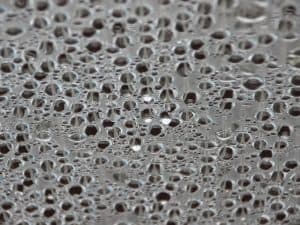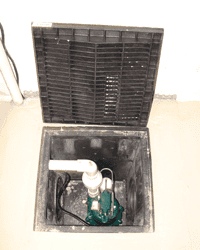Three Waterproofing Tips For Swimming Pool Owners and their Neighbors
Today, residents of Wake County frequently enjoy the benefits offered by backyard or indoor residential swimming pools. A well-maintained pool can supply many happy hours of fun and recreation. It often provides welcome relief from blistering summer temperatures, too. Perhaps not surprisingly, numerous businesses and homeowners maintain this type of facility in the Raleigh Area. The county routinely inspects public pools to ensure compliance with pool maintenance and safety regulations.

Swimming Pools in Wake County, North Carolina
Local ordinances require anyone installing a swimming pool, a hot tub, or a spa in Wake County to obtain a pool building permit first (receiving this document requires passing a site plan approval and meeting building and electrical inspection requirements). Unfortunately, even well maintained facilities sometimes develop water leaks. To safeguard your premises against damaging leaks effectively, you’ll want to check basements and crawl spaces regularly. Even comparatively tiny leaks in swimming pools may cause water saturation in nearby locations. These three waterproofing tips may prove helpful:
One: Monitor Monthly Water Bills Closely
If you own a swimming pool, you’ll want to track your monthly water usage and bills closely. It remains important to recognize simple evaporation from the surface will result in regular monthly water losses. Some sources advise owners to anticipate a drop in pool levels by as much as 0.25 inches daily during hot weather. By checking the water level every five days over the course of a month, you can develop a water evaporation baseline to help you monitor this figure. If you notice a sudden spike in water losses or a significant jump in water bills, consider requesting professional assistance to locate leaks. Some pools designed to compensate for evaporative losses may develop leaks which don’t seem apparent due to the ongoing replacement of water.
Two: Repair Leaks in Vinyl Swimming Pool Liners Promptly
Today, most backyard pools utilize one of three basic types of pool liner: vinyl, fiberglass, or concrete. While the latter two surfaces infrequently develop leaks, vinyl liners sometimes sustain damage requiring urgent repair action. Even a small leak in a vinyl liner may allow large quantities of water to seep below the base of the pool; water may collect near adjoining slabs or basements. Experts recommend addressing pool repair issues quickly, since delays may permit small cracks or tears to expand in size. Concrete pools will require resurfacing (roughly every decade) to remain leak-free.
Three: Inspect Basements And Yards For Signs of Water Leaks Frequently
Swimming pool leaks may also develop in underground pool water and drain pipes. In many situations these pipes constitute residential sub-utility pipes. Owners of properties located close to swimming pools should consider periodically checking basements, storm cellars, and crawl spaces for signs of dampness or adjoining water-saturated soil. A leaking swimming pool water system potentially deposits significant volumes of water into the ground around the home or business they might be near. In Raleigh, some property owners with homes located close to swimming pools might wish to consider requesting annual or semi-annual inspections from a full-time waterproofing company. This process may help pool owners learn about possible water leaks in a timely manner.
Problems Posed by Swimming Pool Leaks
A swimming pool leak may damage adjoining man-made structures (including residences). While Wake County will inspect commercial pools, private swimming pools don’t necessarily receive close maintenance attention unless property owners remain vigilant for signs of leaks. Regular property inspections can help detect leaks in time to prevent some forms of damage!
Obtain Knowledgeable Waterproofing Assistance
Raleigh Waterproofing, Inc. offers experienced residential and commercial waterproofing assistance in the Greater Raleigh, North Carolina area. If you’d like to better secure a basement against water leaks (including possible leaking from a nearby swimming pool), we provide excellent assistance. Ask us to inspect your premises for signs of water penetrating basements or crawl spaces, or pooling near foundations or slabs.
We can recommend measures to help you obtain dry, mold-free living and work areas. We offer skilled foundation repair services, sump station installations, excavations, and yard drainage assistance. Our firm received an Angie’s List Super Service Award in 2015. Call us at 919-877-9969 to schedule an initial appointment!
Further Information
1. http://www.wakegov.com/inspect/permits/Pages/devpools.aspx
2. https://www.angieslist.com/articles/pool-level-dropping-it-leak-or-evaporation.htm
3. http://www.poolswiki.com/wiki/51/pool-liner
4. https://www.bobvila.com/articles/2464-swimming-pools-101/




